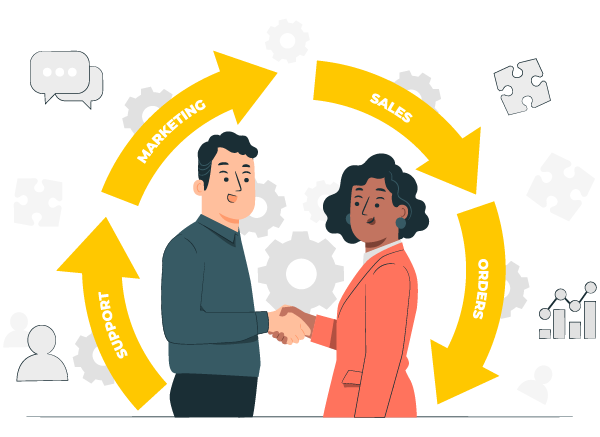
As a Product Owner, you’re the captain of the ship that is the product development process. You’re responsible for navigating the choppy waters, steering the direction of the product, and keeping everyone on board motivated and focused.
To do this, you need to be a competent in several key areas. First, you must have your finger on the pulse of your customers’ needs and desires. You’re the ultimate listener, always attuned to the latest feedback and market trends, and never missing an opportunity to get inside the head of your target audience.
Second, you’re the visionary who sets the course for your team. You’re the one who paints the big picture and shows your team how their work fits into the larger mission of the product. You’re the one who motivates them to aim high and strive for greatness.
Third, collaboration is the name of the game when it comes to product ownership. You work closely with your stakeholders – the senior management, customers, and other teams – to make sure everyone is in sync. Together, you discuss investments, schedules, and expected outcomes, and keep the product backlog visible to all stakeholders. It’s a true team effort, and you’re the glue that holds it all together.
The Product Owner in a Senior Position
The PO at scale does not work with a single team. Rather, the PO has full accountability for the whole product and is shared between multiple teams. Product management is an essential practice for POs.
Successful product ownership requires the ability and mandate to decide on the following:
- Product vision
- Product strategy
- Overarching product goals
- Which features to develop
- Order of feature delivery
The PO has the final say and provides leadership regarding which ideas to pursue, features to develop, enhancements to make, and stakeholder proposals to accept or reject. A PO’s decisions significantly impact product success and the organization’s economic results. So, to be successful in large-scale Agile development, the PO needs:
An understanding of the organization and its market, customers, and users to make informed decisions about investment, priority, and release dates
The mandate to make decisions that will have a substantial impact on product success
Given these characteristics, we recommend placing the PO role at a senior management level. In companies with a board of directors, that PO role would be at the board-1 to board-2 level. Why? at this senior level, the PO can take responsibility for product success and the financial results of the product.

Outward-Focused Product Owner
The PO role is often a new, full-time role in an organization owing to its accountabilities, responsibilities, and reporting, rather than the addition of activities to an existing role. Many senior roles comprise general managerial activities. In organizational role descriptions, you can find activities such as the following:
- Vacations
- Hiring
- Resource allocation
- Conflict resolution
- Talent development
- Appraisals
- And many more.

Although these activities are all important, not all are directly related to product ownership.
We, therefore, recommend removing most of the managerial activities from the PO role so that the PO can focus on the product. All product-related activities are performed by the PO or the teams, and the remaining general managerial activities are done by—yes, you guessed it—management.
Avoid Product Owner Committees
While committees may seem like a good idea for bringing diverse perspectives on a subject, it’s important to avoid them in the PO role. When perspectives come from different organizational units that have opposing goals, it can lead to coordination costs, goal conflicts, and decreased ability to respond to change. To avoid these negative outcomes, you need to have the mandate to make final product decisions when needed.
Avoid Product-part owners
Another common mistake to avoid is having product-part owners. These are individuals who work on a specific part of the product and act as managers or requirements engineers, often playing the PO role for one team. However, this can lead to a lack of accountability for the whole product and missed opportunities.
The Product Owner Process
Validating assumptions by developing software can be costly. So, you’ll want to ensure that the teams develop features that have been adequately studied and shown to be valuable. Discovering which features to develop depends on your product context and life-cycle stage. It can include a vast array of product research activities, such as the following:
- Customer interviews
- Customer understanding workshops
- Advertising
- Writing hypotheses
- Designing Wizard of Oz experiments
- Prototyping
In the new product development context, the PO considers low-cost tactics that quickly reduce uncertainty, such as interviewing customers and running small experiments. Over time, the PO applies bigger, more expensive tactics such as experiments, prototyping, and shipping an actual product. The “truth curve” developed by Giff Constable shows the level of believability for different kinds of experiments.

Truth curve. (Adapted from Giff Constable, Talking to Humans)
The PO considers low-cost methods because they can provide quick insights, albeit at the expense of lower confidence. The data from those methods are subject to the judgment and interpretation of the PO. The more expensive methods lead to higher confidence, but they take more time to prepare and run. For example, live product data about usage, purchases, or retention are unquestionably valuable, but shipping a live product takes longer and therefore increases the validation loop.








